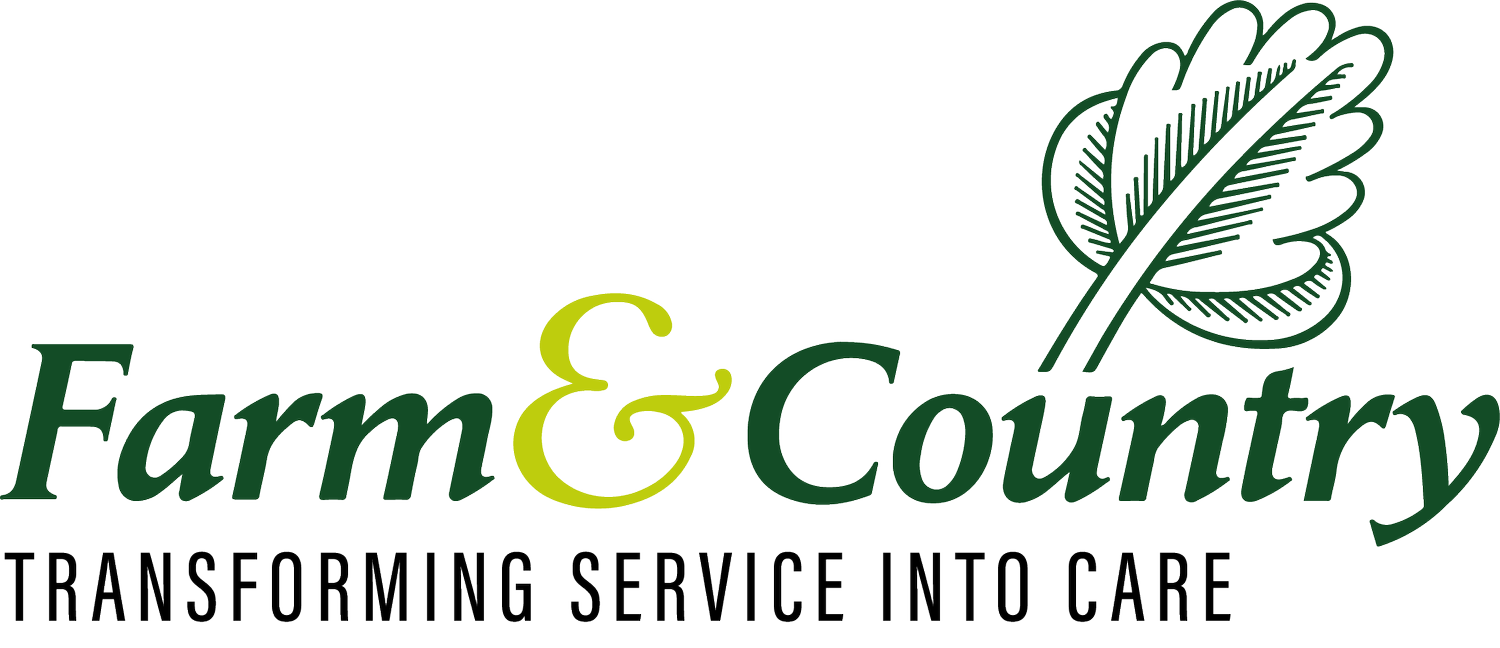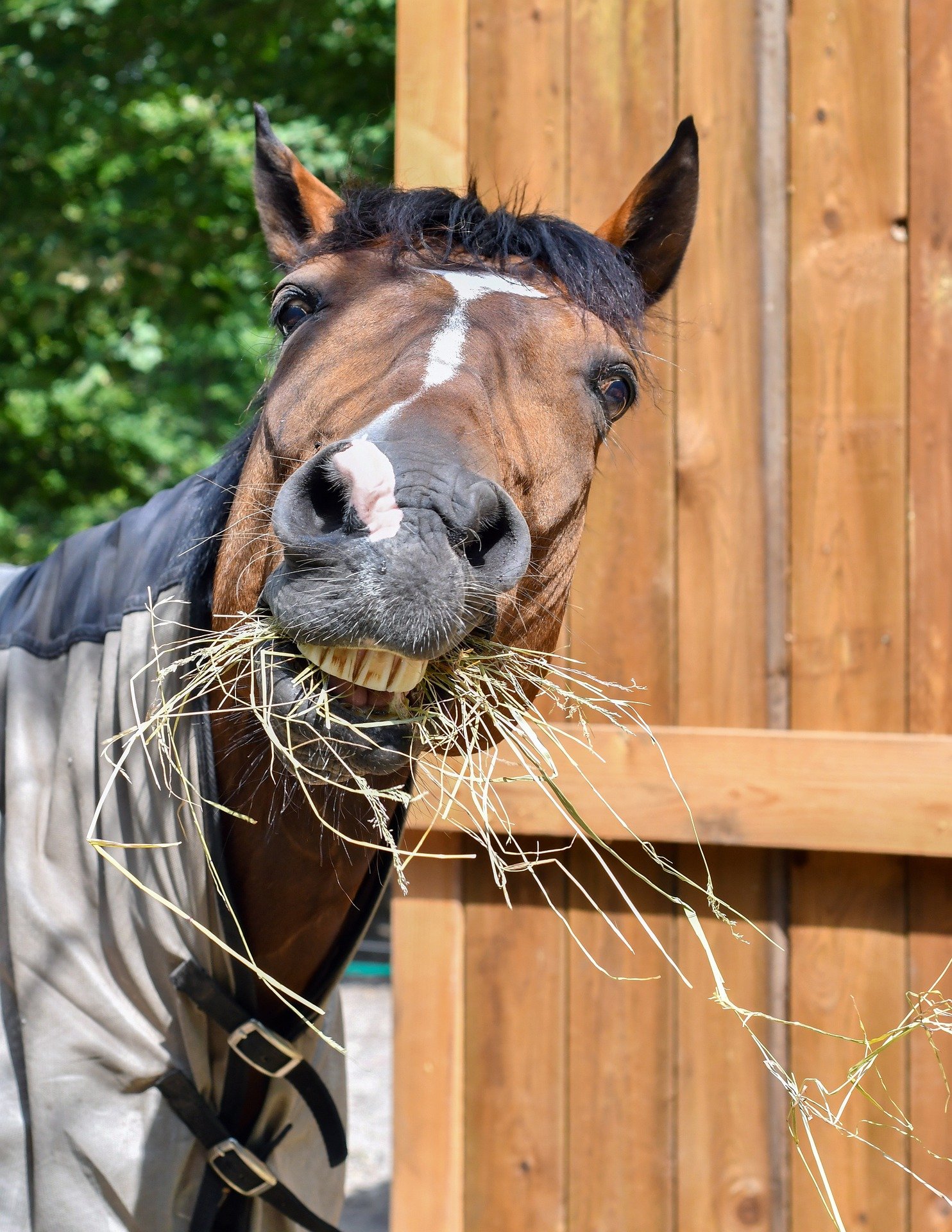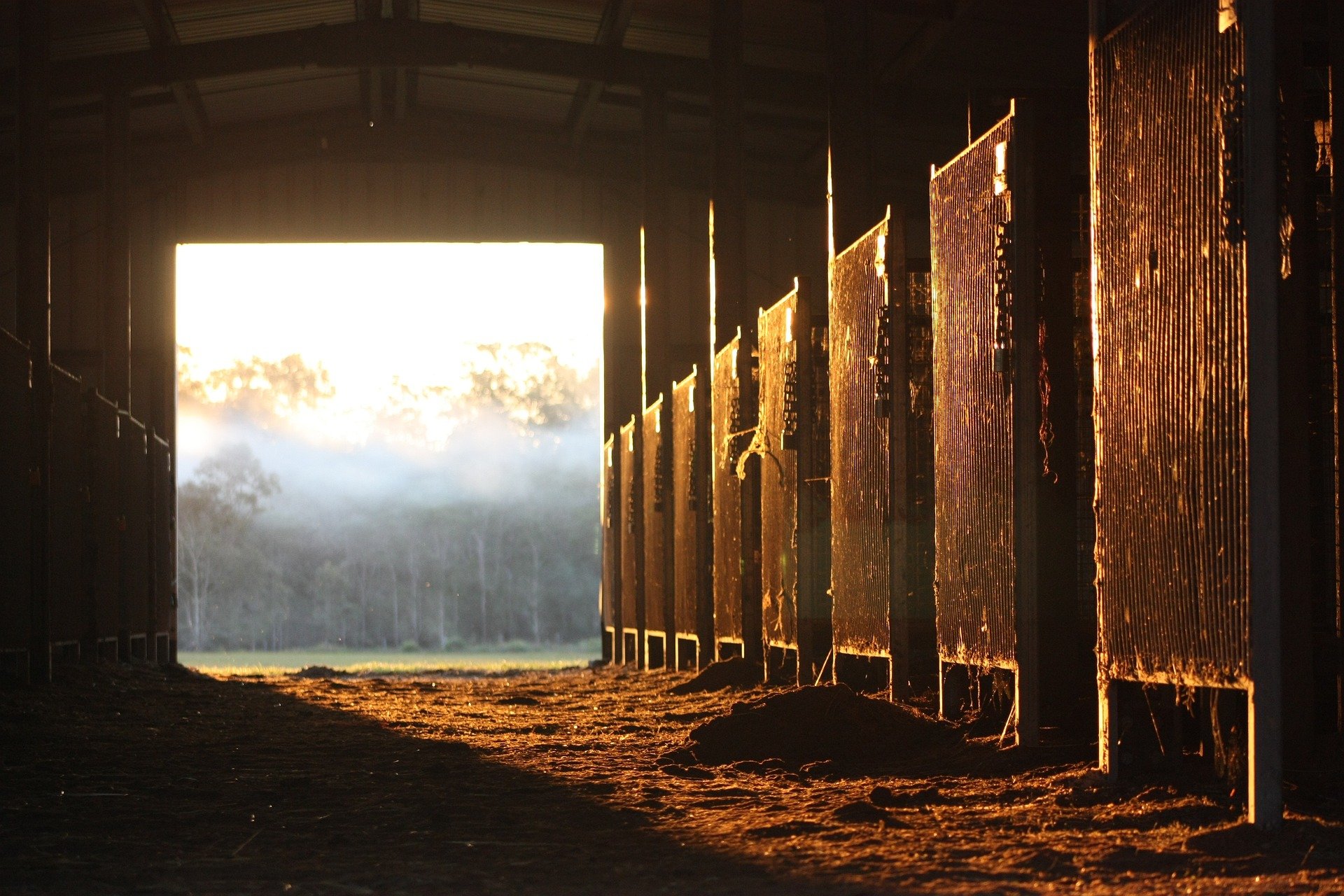Horses: the need for a suitable environment
Shelter
Not all horses will need a stable/housing. Some breeds with thick coats are capable of living outdoors throughout the year, provided they can get shelter from the prevailing winds, summer sun and flies. As donkeys do not have waterproof coats they will always need shelter from the rain. Shelter can be natural (for example trees or hedges) or man-made (such as a field shelter) depending on the field environment and type of horse.
However, where horses are of less hardy breeding (that is thoroughbreds), clipped, very young or elderly they may require stable accommodation/housing or other shelter to protect them from the cold and damp or very hot weather. Any horse may need stabling at short notice should they become sick or injured and provision should be made for this before an emergency arising.
Pasture
The area of pasture required per horse will depend on the type of grass, ground conditions, time of year, type of horse and degree of pasture management employed. As a general rule, each horse requires about 0.5 - 1.0 hectares (or 1.25 to 2.5 acres) of grazing of a suitable quality if no extra feeding is being provided.
Each donkey requires a minimum of 0.2 - 0.4 hectares (a half to one acre). A smaller area may be adequate where a horse is principally housed and grazing areas are used only for occasional turnout.
A good pasture management programme is necessary to avoid over-grazing, to aid worm control, to maintain good drainage and to control weeds. This includes, for example, picking up droppings, rotating grazing areas and where possible, removing horses when the ground is very wet to prevent poaching (where the pasture is broken into wet muddy patches by the action of the horse's feet on the wet ground) and health problems.
In muddy conditions, it is important that a horse has an adequately sized, well-drained area in the pasture on which to stand and lie down, and on which to be fed and watered.
Most horse pastures have a large amount of weeds and rough grass where horses are the only grazers. Consideration should therefore be given to grazing sheep or cattle in horse pastures to improve sward quality and assist in reducing worm burden.
Dangerous objects and poisonous plants
Fields should be kept clear of dangerous objects and poisonous plants, for example yew and laburnum, which are extremely toxic to horses and therefore horses should not have access to these (or their clippings) at any time.
Ragwort is toxic to horses and ingestion can result in fatal liver damage. Horses will eat cut ragwort as well as the living plant so the right type of disposal is essential. As cut and pulled flowering ragwort plants may still set seed, and ragwort has a 70 per cent seed germination rate, effective disposal is a key point in control. All ragwort species should be disposed of by extraction (to remove the root base) followed by incineration, controlled burning or removal to landfill.
Hedge clippings and grass cuttings
Horses should not have access to hedge clippings.
Grass cuttings are not suitable for horses to eat and care should be taken that horses do not gain access to these (that is garden waste or cut fields).
Fences should be strong enough and high enough to prevent horses from escaping (for example higher fences may be required for stallions) and designed, constructed and maintained to avoid the risk of injury with no sharp projections.
Gateways should be designed to allow for the easy and safe passage of horses, and gates should be fastened securely to prevent injury and escape. In some situations, gates may need to be padlocked. Barbed wire and sheep wire are not ideal. Where used the wire should be stretched tight in fields with horses. Where plain wire is used, measures should be taken to make sure it is sufficiently visible to the horse.
Fence heights for horse and pony pastures
The height of fences required will depend on the types of horses kept in the field. The British Horse Society (BHS) recommends that fences should be 1.25m (4ft) high, more specifically:
horses: 1.08m to 1.38m (3ft 6in to 4ft 6in)
ponies: 1m to 1.3m (3ft 3in to 4ft 3in)
Lower rail (horses and ponies): 0.5m (1ft 6in) above ground
stallions: 1.38m to 1.8m (4ft 6in to 6ft)
Stallions may require a double fence line and possibly an electric fence line along the top of the paddock rail. This is to prevent aggression between occupants of different paddocks, as well as to contain the stallion within the allocated area.
Electric fences for horse and pony pastures
Electric fences should be designed, installed and maintained so that contact with them does not cause more than momentary discomfort to the horse. All power units should be correctly earthed.
Electric fencing should be clearly visible to horses to prevent injury, with extra supervision provided until they become accustomed to it. Temporary internal sub-divisions created out of electrified tape and plastic posts provide an effective internal barrier, but these should not be used as the sole boundary fence.
When grazing a number of horses, the allocation of paddocks should be considered so that horses that cause conflict are separated from the other horses. This will prevent bullying and reduce the risk of injury to subordinate horses.
Stable accommodation/ housing
Welfare aspects should be considered when constructing or altering buildings to provide housing for horses, consideration should be given to obtaining professional advice to make sure the design is fit for purpose.
The main considerations are the safety and comfort of the horses, ease of access and adequate drainage and ventilation. If poorly designed or managed, stabling can contribute to the rapid spread of disease, cause injury and pose significant fire risks.
The following applies equally to all forms of housing including individual stables, stalls and communal barns.
Construction of stables
The building should be constructed soundly, with no exposed surfaces or projections likely to cause injury. All surfaces should be capable of being cleaned and disinfected. If surfaces are treated, non-toxic paints or non-toxic wood preservatives should be used.
Fixtures and fittings of stables
Fixtures and fittings such as tie rings, hay racks and water bowls should be free of sharp edges and positioned so as to avoid injury, particularly to the eyes. It is better to feed horses off the floor without the use of a haynet. However, if used, haynets should be fixed at the horse's head height, allowing the horse to eat comfortably yet avoiding the risk of the horse getting its feet or head collar caught in the net when empty
Head collars
Head collars should not be left on in stables. However, if it is absolutely necessary they should be capable of breaking under pressure to prevent injury if they become entangled.
Stable floors
Floors should be reasonably even, nonslip and designed to give good drainage, taking stable waste away from the horse.
Stable doors
Doors should be of a suitable size for the individual horse as a guide 1.25m (4ft) wide. The height of the door should allow the horse or pony to see out over the door, door grills may be used. The bottom door should be capable of being securely fastened with top and bottom bolts.
Stables may also have a top door which should be capable of being secured in the open position. You should be aware that shutting the top door may reduce ventilation and natural light.
Stable roofs
Roofs should be high enough to provide adequate ventilation including good air circulation. There should be a reasonable clear space 0.6 to 1.0 m (2 to3 ft) to the roof above the withers of the horse in its normal standing position.
Light in stables
Enough light is essential within all stabling both for the horse to see adequately and also to allow inspection and safe handling of horses at all times. This can include portable lighting. Light bulbs should be enclosed in safety fittings with cabling secured well out of reach.
Stable windows and ventilation
Slats should provide adequate air circulation without creating draughts. Perspex or safety glass (with grilles fitted between the horse and the glass) is advisable. One window or top door should normally be open at all times.
Adequate ventilation in any equine housing is essential. Horses can develop respiratory problems if kept in housing with poor ventilation. Levels of dust within stables should be kept to a minimum and there should be a good flow of air through the buildings without unnecessary draughts.
Stable sizes for horses
As horses and ponies vary greatly in size it is difficult to set an ideal size for loose boxes, barns or stables. However, the stable size should be suitable for the individual horse, as a minimum, each horse should have enough room to lie down, readily rise and turn around in comfort. Boxes for foaling and for mares with a foal at foot will require additional space. All passageways should be wide enough to allow horses to be led safely past other horses.
As a guide the BHS minimum stable size recommendations are:
horses: 3.65m x 3.65m (12ft x 12ft)
large horses: 3.65m x 4.25m (12ft x 14ft)
ponies: 3.05m x 3.05m (10ft x 10ft)
large ponies: 3.05m x 3.65m (10ft x 12ft)
foaling box: (horse): 4.25m x 4.25m (14ft x 14ft)
As a guide the Donkey Sanctuary minimum stable sizes for donkeys are:
mules: 3.65m x 3.65m (12ft x 12ft)
donkeys: 3.05m x 3.05m (10ft x 10ft)
large donkeys: 3.05m x 3.65m (10ft x 12ft)
Communal barns for horses
Groups of horses can be kept together in communal barns, but care should be taken to make sure that all horses get adequate access to hay, feed and water. Enough space should be provided to allow free movement, and to allow all the horses to lie down at the same time. Care should be taken to select groups that are compatible and aggressive horses should be segregated. Late-term mares and mares with foals at foot have special requirements and it may not be suitable to house these animals in communal barns.
Bedding for horses
Adequate and suitable bedding material is necessary in all equine accommodation to provide warmth, protection against injury and to allow the horse to lie down in comfort. Whatever bedding is used (for example straw, shavings, rubber stable mats and so on) it should be well managed and changed or cleaned regularly.
Fire is always a risk in stable areas. Advice should be sought from the local Fire Prevention Officer about statutory requirements. Highly flammable liquid material or combustible material should not be stored in or close to stables where horses are housed. Smoking in stable areas should be prohibited.
All equipment and services (lighting units, fire extinguishers and alarm systems) should be kept clean, inspected annually by a qualified person and kept in good working order. All electrical installations should be installed, maintained and periodically inspected and tested by a fully qualified electrician.
Wiring and fittings
Wiring and fittings should be inaccessible to horses, well-insulated, safeguarded from rodents and properly earthed. If using extension leads or cables care should be taken to reduce the risk of injury to the horse. All metal pipework and structural steelwork should be properly earthed. The risk of fire and electrocution can be reduced by having the whole installation protected by a residual current device (RCD).
Stabled horses should be capable of being released quickly if there's a fire or other emergency based on a pre-planned emergency turnout procedure.
Tethering
Tethering is not a common practice in Northern Ireland. Tethering is securing an animal by an appropriately attached chain, to a centre point or anchorage, causing it to be confined to a desired area.
Tethering is not a suitable method of long-term management of an animal, as it restricts the animal's freedom to exercise itself, to find food and water, or to escape from attacks by dogs or extreme hot and cold weather. It also risks an animal becoming entangled, or injuring itself, on tethering equipment.
Tethering may be useful as an exceptional short-term method of animal management (for example in medical cases where short-term restriction of food intake is required under veterinary advice).
Tethered horses need regular supervision. Tethered horses should be inspected no less than every six hours during normal waking hours, and clean fresh water should be available at all times. The term tethering does not apply to horses that are stall-tied (a common method historically used for stabling cavalry horses).
Any horse that is stall-tied should receive regular exercise, unless this method is used under veterinary guidance, for example as part of the management of an orthopaedic condition.
Rugs
Not all horses will need a rug during inclement weather as some breeds with thick coats are capable of living outdoors throughout the year without rugs.
Some of these breeds often thrive better without rugs, as rugs can sometimes be a cause of skin irritation. However, where horses are of less hardy breeding, clipped or elderly they may require a rug to help keep them warm and dry during cold spells, during wet weather or to provide protection from flies. Turnout rugs will need to be removed when the weather (particularly temperature) improves.
Rugs and hoods should fit well, the right size to suit the horse, of the right type for the purpose intended and correctly fitted to prevent rubbing, hair loss, abrasions or restriction of movement.
The rug weight must be suited to the weather conditions and the temperature. Rugs should be regularly removed so the horse's temperature, body condition and general health can be checked. Ideally, this should be done daily. Horses are very efficient at regulating their own temperature and over-rugging can impede this function.
Rugs should be cleaned and repaired as necessary and all fastenings kept in good working order. A spare rug should be available.
Supervision
Horses at grass should be inspected at least once a day, preferably more often. Stabled or group-housed horses should be inspected at least twice a day. Particular attention should be paid to their gait, demeanour, feet, body condition and appetite so that early signs of disease, injury, illness or signs of parasites can be noticed and suitable treatment quickly provided.
Close examinations should be conducted at regular intervals, ideally daily, in order to identify any problems such as skin conditions, that may not be seen from a distance.
A horse's hooves should be picked out on a regular basis and at the same time examined for signs of discomfort, wounds, injury, loose shoes, impacted foreign material or anything else unusual. Horses should be groomed regularly to make sure that the coat is clean, free from wounds or parasites and to detect rug, tack or harness rubbing.
The frequency required will depend on your horse's management regime and coat type. Horses living outside should not be regularly groomed as this can remove natural protective oils from their coat. They should be regularly and carefully checked over.
More useful links
Original article: https://www.nidirect.gov.uk/articles/horses-need-suitable-environment













